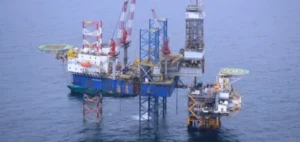Saudi oil giant Aramco on Tuesday reported a net profit of $31.9 billion in the first quarter of 2023, down 19.25% from the same period in 2022, reflecting the downturn in hydrocarbon prices.
The Saudi state-owned company alone generated more than three quarters of the $40.5 billion in first-quarter profits earned by the five “majors” in the sector: BP, Shell, ExxonMobil, Chevron, and TotalEnergies. The world’s largest crude exporter, Aramco had posted a net profit of $39.5 billion in the first quarter of 2022, buoyed by soaring prices in the wake of the Russian invasion of Ukraine.
Prices have fallen in recent months, to the point that the Opec+ cartel of producing countries recently intervened by cutting production in an attempt to support them. “We are continuing with our expansion plans and our long-term outlook remains unchanged, as we believe that oil and gas will remain key components of the global energy mix for the foreseeable future,” Aramco CEO Amin Nasser said in a statement Tuesday. “The net profit could have been higher, but Aramco is multiplying investments, unlike (other oil companies),” observes Jamie Ingram, an analyst at the trade journal MEES.
Aramco, the flagship of the Saudi economy, remains the main source of funding for the ambitious Vision 2030 reform program carried out in recent years by Crown Prince Mohammed bin Salmane, the kingdom’s de facto leader. The company had announced “record” profits of $161.1 billion in 2022, allowing the kingdom to post its first annual budget surplus in nearly a decade, after years marked by the decline in the price of black gold on world markets.
“Chinese demand”
In mid-April, Saudi Arabia decided to transfer 4% of Aramco’s shares, worth nearly $80 billion, to Sanabil Investments, a company controlled by the Public Investment Fund (PIF), one of the world’s largest with over $620 billion in assets.
Aramco had already transferred 4% of its shares last year to the PIF, the government body in charge of economic reforms. The Saudi government remains a shareholder of 90.18%. Saudi Arabia has approved a surplus budget for 2023 of 16 billion riyals ($4 billion) and forecasts GDP growth of 3.1%.
On Sunday, however, the Ministry of Finance announced a budget deficit of about $773 million for the first quarter of 2023, due to a 3% drop in oil revenues and an increase in spending. According to the authorities, this deficit “does not give cause for concern given the soundness of public finances. Oil prices are falling on fears of a global recession and the U.S. banking sector, despite the latest cuts by Opec+, the cartel of oil countries led by Saudi Arabia and Russia.
These cuts, announced at the beginning of April and effective from May until the end of 2023, had been interpreted by many analysts as a desire by the alliance to defend a barrel of Brent above 80 dollars. “The oil market is now dominated by negative investor sentiment due to banking risks in the US,” analyzed Ibrahim al-Ghitani, an energy specialist based in the Arab Emirates. But, he adds, “Chinese demand is expected to increase” during the year.






















